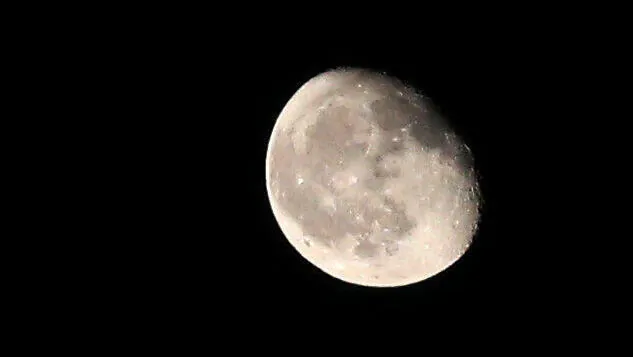
Space Debris and Lunar Ventures: This Week in Space News
2025-05-13
Author: Sarah
Cosmic Drama: The Fall of Kosmos 482
Every day, bits of space debris crash down to Earth, usually burning up upon entry. But this weekend brought something extraordinary: Kosmos 482, a long-forgotten spacecraft primed to withstand the fiery embrace of our atmosphere. Launched in 1972, Kosmos 482 was originally intended as a Venus-bound probe for the Soviet Union's Venera program. Unfortunately, a launch malfunction left it stranded in orbit, where it spent 53 years before finally descending.
The anticipated impact was predicted for May 10 around 6 AM UTC, but its trajectory uncertainty left open a 10-hour window for landing. This meant the spacecraft could have plummeted anywhere from 52° north to 52° south latitude, a vast area over land and sea.
The Aging Artifact
Kosmos 482, a one-meter metal sphere weighing about 500 kg, originally came equipped with parachutes. However, time had all but rendered them useless along with its dead batteries. If it happened to survive re-entry and somehow remained intact, it could hit the ground or ocean at a staggering 250 km/h, akin to a meteorite—certainly enough to cause localized damage. Fortunately, given that two-thirds of Earth is covered in ocean and many land areas are sparsely populated, the likelihood of serious harm remained minimal.
Debris Management: A Global Responsibility
This tale of Kosmos 482 serves as a stark reminder of the crucial need for effective space debris management. Most modern spacecraft are designed to minimize the risk of becoming space junk at their end of life, either by orchestrating controlled re-entries or guiding them into safe orbits. While malfunctions are inevitable, concerted international efforts could significantly lower the risks, allowing humanity to focus on clearing the considerable debris that still clutters our orbit.
NASA’s Budget Dilemma: Cuts and Future Missions
Turning to the present-day landscape of space exploration, NASA faces a proposed budget shake-up that allocates $1 billion for crewed missions to the Moon and Mars, albeit at the cost of significant cuts across other programs. This means projects like the Mars Sample Return mission and other critical initiatives could be at risk. Educational and outreach programs may also feel the pinch, which has alarmed space advocacy groups.
In a bold move, NASA is expected to prioritize lunar and Martian expeditions that represent a dream long-held by SpaceX founder Elon Musk. However, without human-rated Mars mission capabilities in development, a significant chunk of funding may end up in Musk’s SpaceX pockets, which is working on its ambitious Starship for Mars missions.
The Race for Lunar Exploration
Meanwhile, another piece of exciting news has emerged from the Moon: Japan’s Resilience lander, developed by iSpace, has successfully entered lunar orbit and aims for a landing next month. Unlike its counterpart from Firefly, which took a quicker route, Resilience opted for a longer, more fuel-efficient journey.
Hoping to touch down around June 5, Resilience carries cutting-edge scientific instruments and the autonomous rover Tenacious, designed to explore and collect lunar soil samples. These samples, although collected by iSpace, will technically remain on the Moon to bolster NASA's lunar research initiatives.
Looking Ahead: Collaboration in Space
As the space exploration landscape evolves, it appears more missions may become the domain of private companies, especially following NASA’s budgetary restrictions. The future of lunar missions, primarily seen as stepping stones for Mars exploration, now appears to sit squarely in the hands of Musk’s SpaceX and Jeff Bezos’s Blue Origin.
In the race for cosmic supremacy, the fate of debris management and future explorations hangs in the balance, with collaboration and innovation proving ever more vital.


 Brasil (PT)
Brasil (PT)
 Canada (EN)
Canada (EN)
 Chile (ES)
Chile (ES)
 Česko (CS)
Česko (CS)
 대한민국 (KO)
대한민국 (KO)
 España (ES)
España (ES)
 France (FR)
France (FR)
 Hong Kong (EN)
Hong Kong (EN)
 Italia (IT)
Italia (IT)
 日本 (JA)
日本 (JA)
 Magyarország (HU)
Magyarország (HU)
 Norge (NO)
Norge (NO)
 Polska (PL)
Polska (PL)
 Schweiz (DE)
Schweiz (DE)
 Singapore (EN)
Singapore (EN)
 Sverige (SV)
Sverige (SV)
 Suomi (FI)
Suomi (FI)
 Türkiye (TR)
Türkiye (TR)
 الإمارات العربية المتحدة (AR)
الإمارات العربية المتحدة (AR)